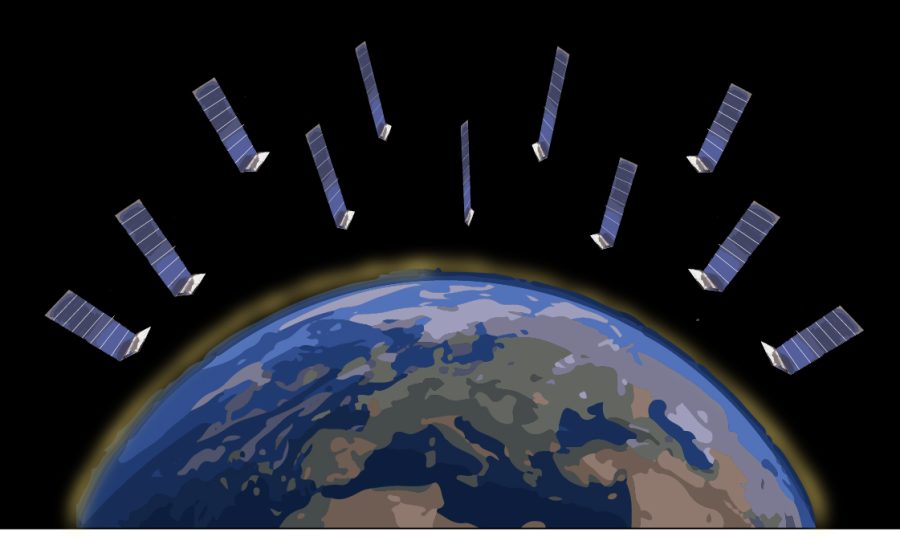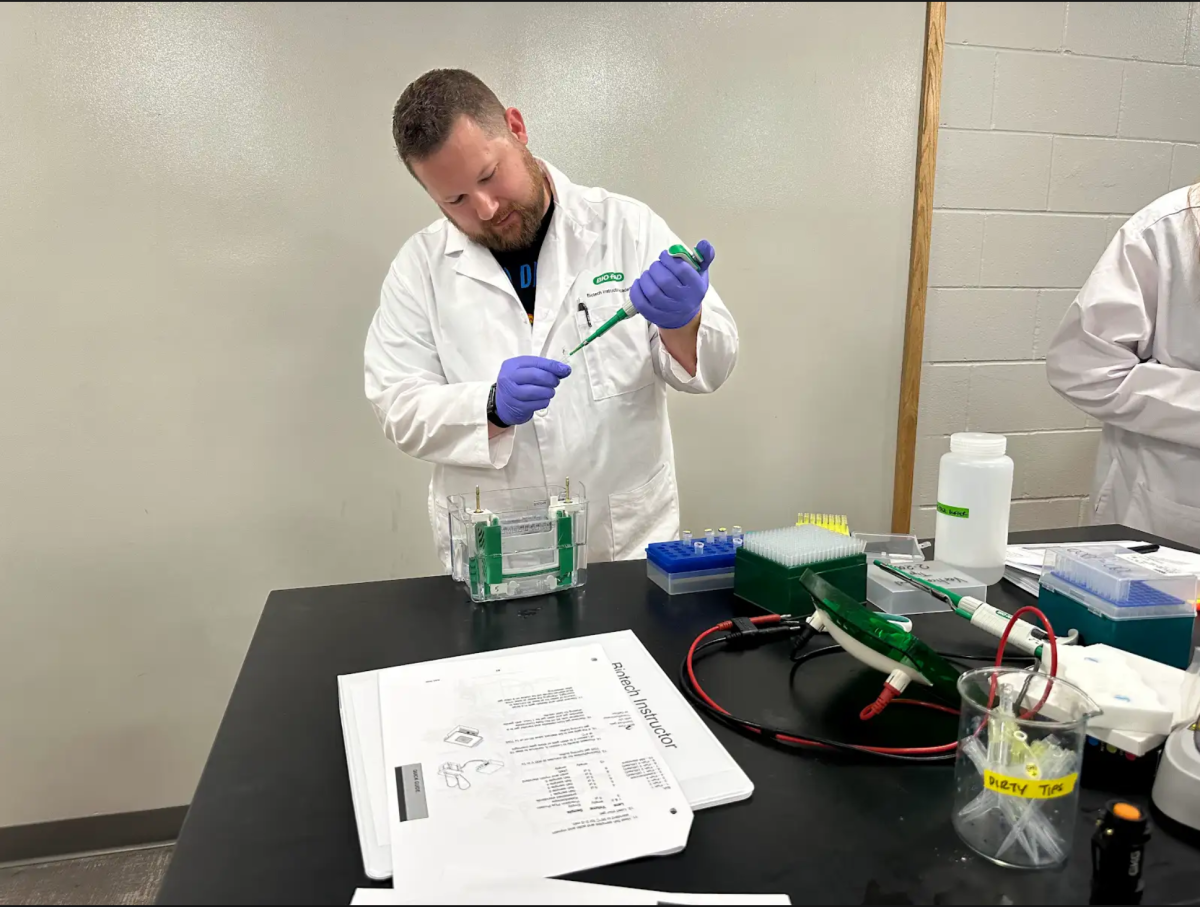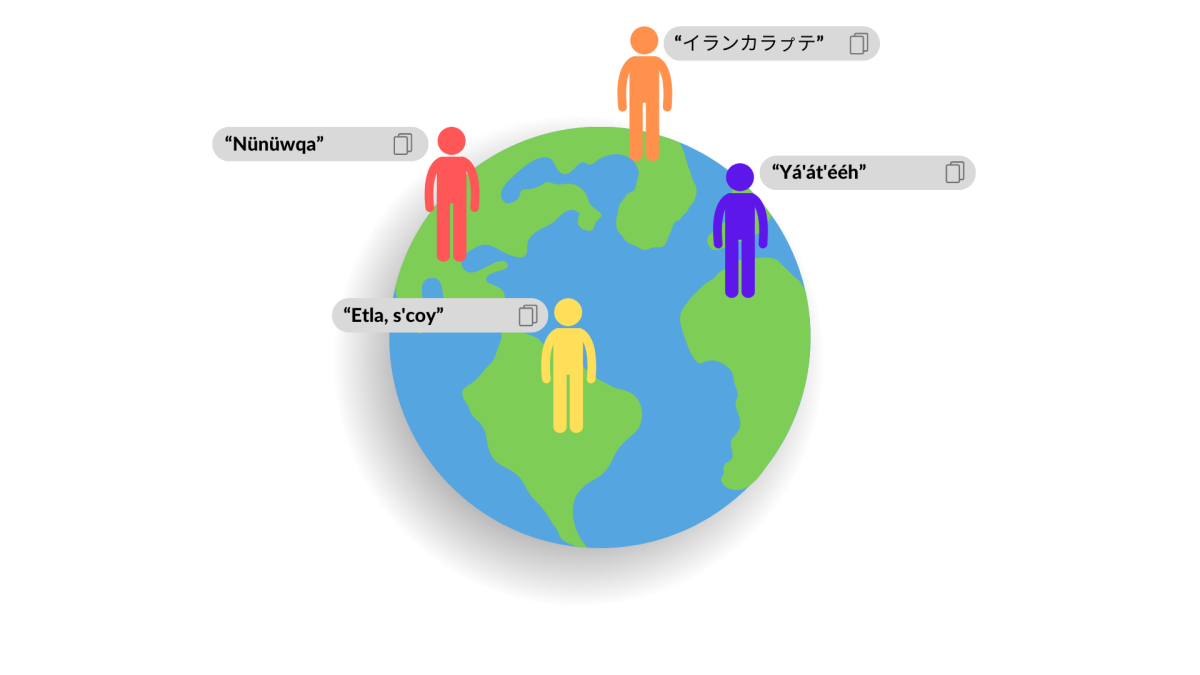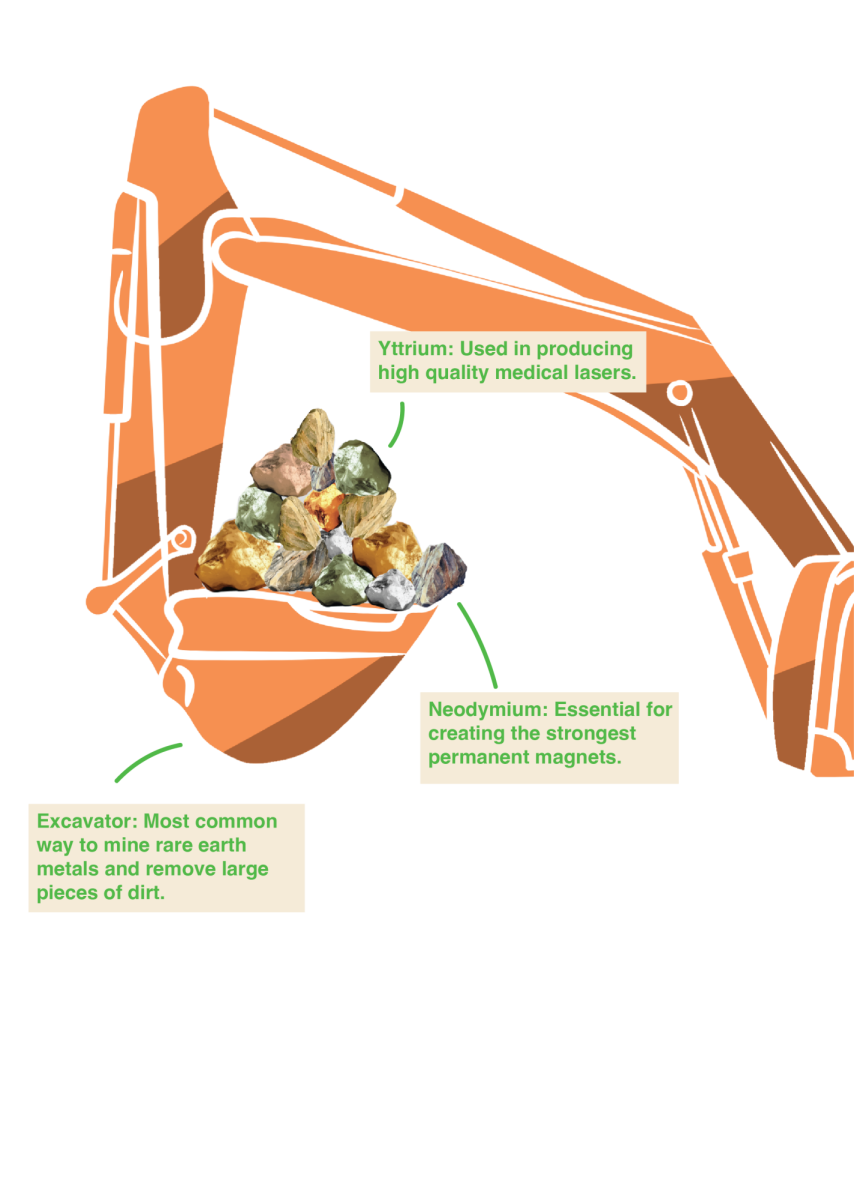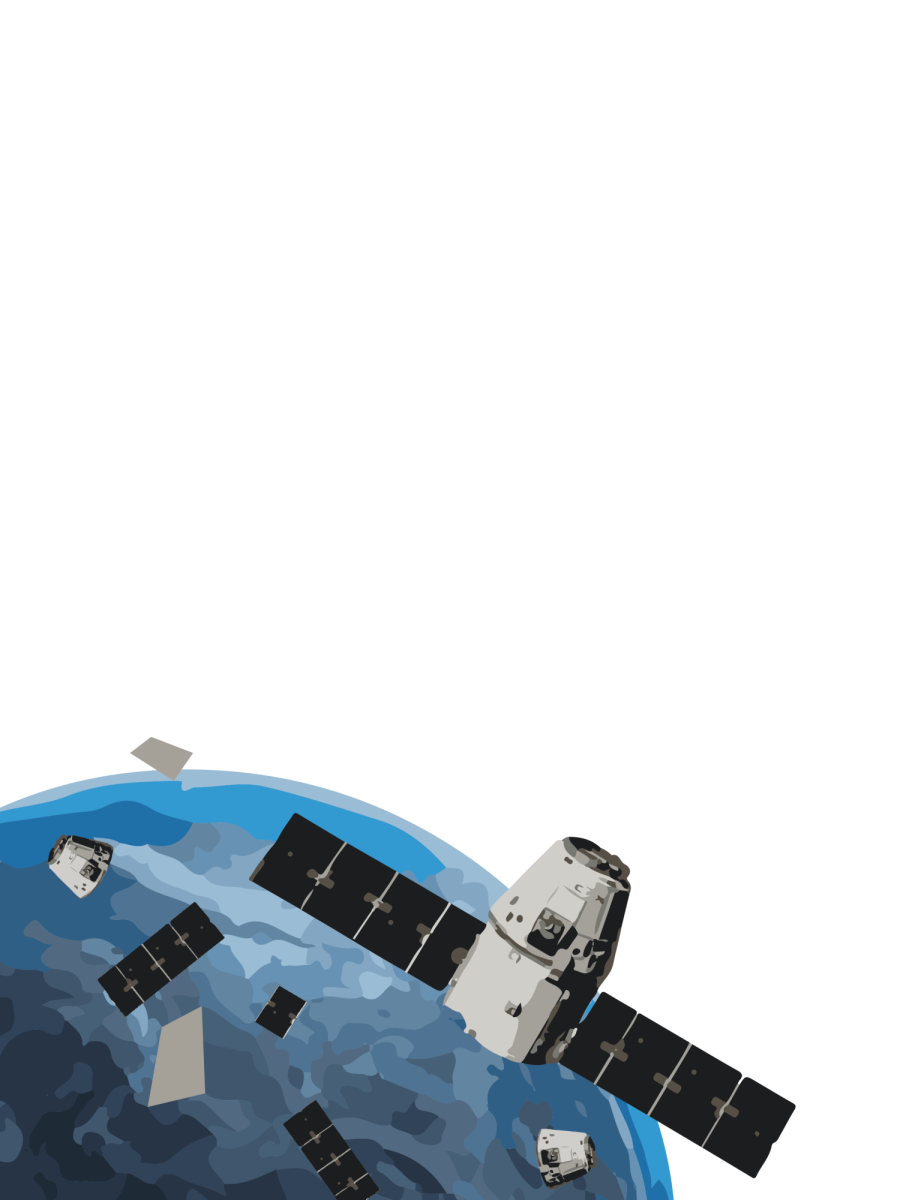If there is one thing Elon Musk is known for, it is being the CEO of Tesla, Chief Engineer of SpaceX and new owner of Twitter after a $44 billion deal. And now, his very own satellite company, Starlink, controlled by SpaceX, could alter the course of our future.
Starlink’s goal is to provide the entire world with internet, no matter where people are, according to Starlink’s website. This means that whether in a rural town or in a hurricane, everyone will be connected to the internet. In order to do so, Starlink must send up a significant number of satellites to cover the broad orbit of the Earth.
Starlink has been sending up satellites since 2019, and they currently have over 2,300 satellites in orbit. Their goal is to reach 12,000 satellites, but may later extend that in the future to 42,000. If Starlink wants to reach this goal, the company must rapidly launch satellites. Just last month on Nov. 1 at 9:41 a.m., SpaceX launched a Falcon Heavy rocket, for the purpose of launching two more satellites. Seventh grader Max Mernard was one of the many Trinity students who watched the launch during school.
“I feel it’s a very generous and important thing to do,” Mernard said.
Trinity’s Chief Technology Officer Alex Podchaski has years of experience with satellites. Podchaski is aware of Starlink’s goals, benefits and negative impacts on our environment.
“Starlink is designed to be a low-Earth orbit, internet communication system, so that it provides Internet to places which either normally wouldn’t have it, or provides a way to link places that have fewer options,” Podchaski said.
Starlink plans to provide internet to the entire world as its goal is to globalize by 2023. However, the globalization of Starlink will not make other internet companies obsolete because Starlink is not focusing on the areas already covered with internet. A goal as strenuous as this may bring doubts to some about their globalizations, however Podchaski sees that this is a feasible aspiration. Podchaski notes that if the company is able to successfully launch the satellites around Earth’s orbit as planned, their globalization will run smoothly.
Aside from globalization, it is clear that the impacts of Starlink will be seen in two main prongs, the first being economically.
“Economically, it will absolutely be beneficial because it will provide internet to places where companies won’t run physical infrastructure,” Podchaski said. “So think about large swaths of the Midwest, think about rural spots in states … if you’re in the middle of the Everglades or you’re in the middle of the mountains, you can get tracked because you have GPS and you have an ability to get a signal.”
If more people are connected with the internet, then several new opportunities will arise for them. According to an article from business unit Next Gen, internet in rural areas will mean an increase in job opportunities, better access to education and a revolutionized expansion for that area. All of this will mean an increase in welfare, and therefore an increase in the economy on a local as well as national scale.
The impacts of connecting rural areas to the economy will be positive not just on a fiscal perspective, but for individual people as well. Unfortunately, the same can not be said for the environment.
“Environmentally, Starlink is a potential problem because the number of satellites that they need to make the system complete creates [an] almost shield around getting to Earth orbit,” Podchaski said. “So when you have a couple 100 satellites going around in low-Earth orbit, launching something beyond that now becomes a massive coordination issue… So it’d be like trying to walk into the ocean through a bunch of seaweed, you’ve got to get through that barrier in order to get out to do the things that you want to do.”
Starlink, aside from its environmental detriments, is a great source of internet for places that currently do not have it along with the economic benefits that come with that.
“Again, it’s a great opportunity for emergency communications, for sites in places that are not connected for travelers, for people who do a lot of voting, to be able to stay connected in a way that will help them stay entertained, but also for their safety,” Podchaski said. “So it’s a great backup communications system.
In contrast to Podchaski’s relatively positive views of Starlink, AP physics teacher Dr. Elmarie Mortimer, the previous earth and space science teacher, shows concern for Starlink’s impact on our world. Mortimer believes that Starlink’s goals are not feasible.
“The biggest issue actually, that one also has to understand about the satellites is that you launch a satellite, but the satellite doesn’t stay in its orbit,” Mortimer said. “It’s not as if it’s all going to sit there in forever orbit in the same exact spot, you have to keep adjusting the orbits. And my understanding is that at the moment, these orbits, they’re struggling to keep all this network of satellites at exactly the right height that they need. Some of them are falling down and becoming space debris and so it’s gonna be really complex.”
Starlink currently has 2,300 satellites, and plans to reach 12,000 in the span of a year. In Mortimer’s opinion, Starlink does not have enough time, nor enough people making sure they all stay in orbit.
Another concern Mortimer has regarding Starlink is the effects it will have on our environment.
“We’ve got a lot of light pollution already as is,” Mortimer said.“And this is just adding to the pollution. And the benefit of it is, so you can sit in a riverbed and have internet, that outweighs?”
Along with the light pollution that comes from the satellites, the large number of satellites orbiting the earth makes it difficult for astronomers to view space.
“The other issue with these satellites is that they are causing a lot of problems, because they [are] low orbit,” Mortimer said. “And so they cause a lot of problems with astronomical observations. So people [are] looking at the stars, [and] tend to now get these streaks of light in the photographs because of these Starling satellites, and a lot of people are not happy about that.”
Mortimer believes that when some of these satellites get knocked out of their orbit for whatever reason, they become debris. When this debris builds up, the chances of satellite collision with other satellites will increase as well as the possibility of satellites falling down into earth and hitting land.
Mortimer also pointed out the Starlink involvement in the current Russia Ukraine conflict. According to an article from CNN, Starlink is currently providing 20,000 satellites to Ukraine for their forces to be able to remain connected with internet, which is vital to their defense against Russia. However, CNN notes that Elon Musk has already expended $80 million, and that will exceed $100 million by the end of the year. Elon Musk states that he no longer plans to pay for the cost of providing satellites to Ukraine, and now is asking the government to step in and help. If Starlink along with Elon Musk are not able to provide satellites to a single country in need, then they have no chance of globalizing and providing internet to the entire world.
With all things considered, Starlink will hopefully be able to provide internet to areas in need, nevertheless the harms and negative impacts it brings with its light pollution and detriment to the environment outweigh the benefits.




